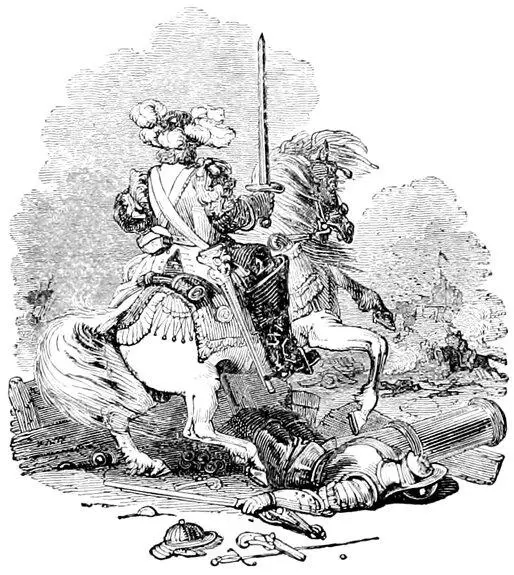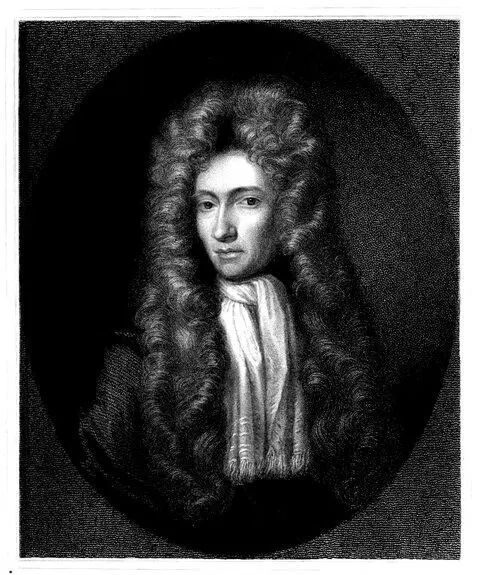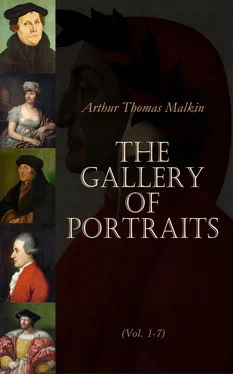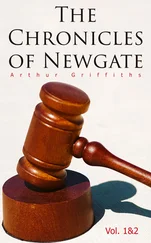The Swabian peasants let the spot where he fell lie fallow for many years, and carefully preserved a tree under which he had been sitting just before. Strange that the people who had suffered so much at his hands, should regard his memory with such respect.
The character of Turenne was more remarkable for solidity than for brilliancy. Many generals may have been better qualified to complete a campaign by one decisive blow; few probably have laid the scheme of a campaign with more judgment, or shown more skill and patience in carrying their plans into effect. And it is remarkable that, contrary to general experience, he became much more enterprising in advanced years than he had been in youth. Of that impetuous spirit, which sometimes carries men to success where caution would have hesitated and failed, he possessed little. In his earlier years he seldom ventured to give battle, except where victory was nearly certain: but a course of victory inspired confidence, and trained by long practice to distinguish the difficult from the impossible, he adopted in his later campaigns a bolder style of tactics than had seemed congenial to his original temper. In this respect he offered a remarkable contrast to his rival in fame, Condè, who, celebrated in early life for the headlong valour, even to rashness, of his enterprises, became in old age prudent almost to timidity. Equally calm in success or in defeat, Turenne was always ready to prosecute the one, or to repair the other. And he carried the same temper into private life, where he was distinguished for the dignity with which he avoided quarrels, under circumstances in which lesser men would have found it hard to do so, without incurring the reproach of cowardice. Nor must we pass over his thorough honesty and disinterestedness in pecuniary matters; a quality more rare in a great man then than it is now.
In 1653 he married the daughter of the Duc de la Force. She died in 1666, without leaving children.
Turenne composed memoirs of his own life, which are published in the Life of him by the Chevalier Ramsay. There is also a collection of his Military Maxims, by Captain Williamson. In 1782 Grimoard published his ‘Collection des Memoirs du Marechal de Turenne.’ Deschamps, an officer who served under him, wrote a full account of his two last campaigns; and the history of his four last campaigns has been published under the name of Beaurain. We may also refer the reader for the history of these times to Voltaire, Siècle de Louis XIV.

French Cavalier of the seventeenth century.

Table of Contents
This excellent and accomplished person was one of those who do honour to high birth and ample fortune, by employing them, not as the means of selfish gratification or personal aggrandisement, but in the furtherance of every useful pursuit, and every benevolent purpose. By the lover of science he is honoured as one of the first and most successful cultivators of experimental philosophy; to the Christian his memory is endeared, as that of one, who, in the most licentious period of English history, showed a rare example of religion and virtue in exalted station, and was an early and zealous promoter of the diffusion of the Scriptures in foreign lands.
Robert Boyle was the youngest son but one of a statesman eminent in the successive reigns of Elizabeth, and the first James and Charles; and well known in Ireland by the honourable title of the Great Earl of Cork. He has left an unfinished sketch of his own early life, in which he assumes the name of Philaretus, a lover of virtue; and speaks of his childhood as characterized by two things, a more than usual inclination to study, and a rigid observance of truth in all things. He was born in Ireland, January 25, 1626–7. In his ninth year he was sent, with his elder brother Francis, to Eton, where he spent between three and four years: in the early part of which, under the guidance of an able and judicious tutor, he made great progress both in the acquisition of knowledge, and in forming habits of accurate and diligent inquiry. But his studies were interrupted by a severe ague; and while recovering from that disorder he contracted a habit of desultory reading, which it afterwards cost him some pains to conquer by a laborious course of mathematical calculations. During his abode at Eton several remarkable escapes from imminent peril occurred to him, upon which, in after-life, he looked back with reverential gratitude, and with the full conviction that the direct hand of an overruling providence was to be traced in them.

Engraved by R. Woodman. ROBERT BOYLE. From an original Picture, in the possession of Lord Dover. Under the Superintendance of the Society for the Diffusion of Useful Knowledge. London. Published by Charles Knight, Pall Mall East.
Towards the close of 1637, as it should seem, his father, who had purchased the manor of Stalbridge, in Dorsetshire, took him home. In October, 1638, he was sent abroad, under the charge of a governor, with his brother Francis. They visited France, Switzerland, and Italy; and Philaretus’s narrative of his travels is not without interest. The only incident which we shall mention as occurring during this period, is one which may be thought by many scarcely worthy of notice. Boyle himself used to speak of it as the most considerable accident of his whole life; and for its influence upon his life it ought not to be omitted. While staying at Geneva, he was waked in the night by a thunder-storm of remarkable violence. Taken unprepared and startled, it struck him that the day of judgment was at hand; “whereupon,” to use his own words, “the consideration of his unpreparedness to welcome it, and the hideousness of being surprised by it in an unfit condition, made him resolve and vow, that if his fears that night were disappointed, all further additions to his life should be more religiously and watchfully employed.” He has been spoken of as being a sceptic before this sudden conversion. This does not appear from his own account, farther than as any boy of fourteen may be so called, who has never taken the trouble fully to convince himself of those truths which he professes to believe. On the breaking out of the rebellion in 1642, the troubled state of England, and the death of the Earl of Cork, involved the brothers in considerable pecuniary difficulties. They returned to England in 1644, and Robert, after a short delay, took possession of the manor of Stalbridge, which, with a considerable property in Ireland, had been bequeathed to him by his father. By the interest of his brother and sister, Lord Broghill and Lady Ranelagh, who were on good terms with the ruling party, he obtained protections for his property, and for the next six years made Stalbridge his principal abode. This portion of his life was chiefly spent in the study of ethical and natural philosophy; and his name began already to be respected among the men of science of the day.
In 1652 he went to Ireland to look after his property, and spent the greater part of the next two years there. Returning to England in 1654, he settled at Oxford. That which especially directed him to this place, besides its being generally suited to the prosecution of all his literary and philosophical pursuits, was the presence of that knot of learned men, from whom the Royal Society took its rise. It consisted of a few only, but those eminent; Bishop Wilkins, Wallis, Ward, Wren, and others, who used to meet for the purpose of conferring upon philosophical subjects, and mutually communicating and reasoning on their respective experiments and discoveries.
Читать дальше















